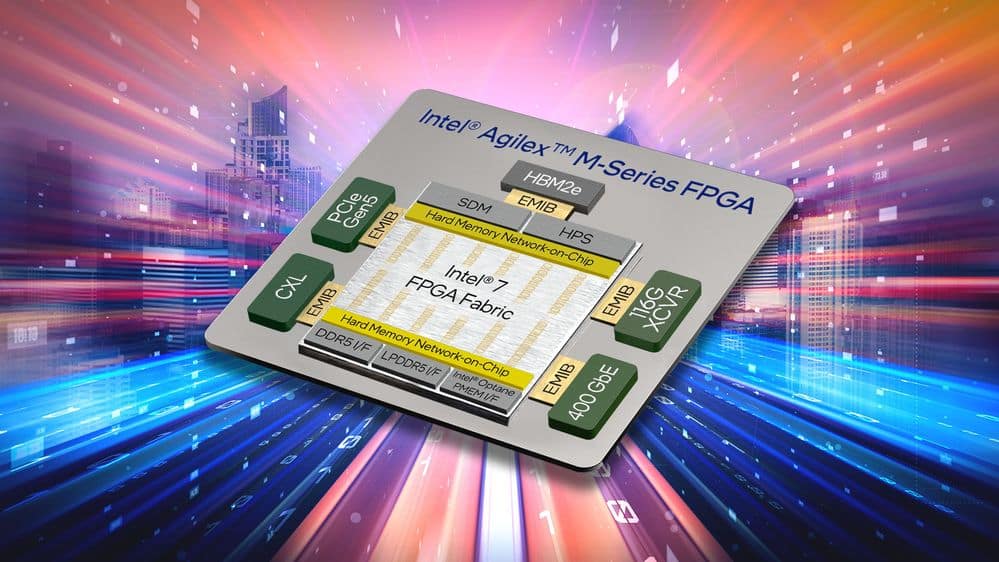Intel has introduced details for Agilex M-Series FPGAs to address the global shift from centralized compute clusters and data storage to a more distributed architecture. With the exponential growth of data in the cloud, at the edge, and all points in between, field-programmable gate arrays (FPGAs) play an increasingly important role in modern applications from the data center to the network the edge.

FPGAs deliver flexibility, massively parallel architecture, and input/output (I/O) bandwidth for accelerating the wide range of tasks from high-performance computing (HPC) to networking and storage. Today’s applications are memory intensive, bandwidth-heavy, and demand low-latency and power efficiency.
The Intel Agilex M-Series FPGAs are built on Intel 7 process technology, taking advantage of the available high memory bandwidth with in-package HBM DRAM. Intel has incorporated several new innovations and features in the Agilex M-Series to provide the industry with high-speed networking, computing, and memory acceleration required to meet performance and capability goals for networks, cloud, and edge applications. Intel previously introduced their Agilex line of FPGAs back in 2019.
Addressing Cloud-To-Edge Infrastructures
The evolving cloud-to-edge infrastructure model combines scale and compute capacity in the cloud with continued demand for increased network bandwidth. Keeping with the continued push to the edge, the new M-Series FPGA provides the technology for more efficient and faster decisions.
New features include:
- The industry’s highest memory bandwidth for an FPGA
- The industry’s highest DSP compute density in an HBM-enabled FPGA
- Greater than 2x fabric performance per watt versus competitive 7nm FPGAs
The “M” Means Memory
The “M” in “M-Series” means “memory.” More and faster memory is undoubtedly a critical benefit incorporated into Intel Agilex M-Series FPGAs. Almost without exception, advanced applications require a memory hierarchy that ranges from fast to faster to fastest while allowing design teams to trade off memory bandwidth and latency versus memory capacity.
This is the first FPGA in the Intel Agilex device family to provide in-package High Bandwidth Memory (HBM2e) and includes hardened controllers for other memory technologies such as DDR4, DDR5, and LPDDR5. Two hardened memory network-on-chip (NoC) functions provide the FPGA fabric with high-bandwidth, resource-efficient access to both in-package HBM2e and onboard memory resources.
Benefits HPC, OTN, And NFV
Markets benefitting from the Agilex M-series FPGAs include:
- Test and measurement (arbitrary waveform generators, 5G/6G cellular network test, GHz RF test)
- Data centers (HPC, cloud computing, cryptocurrency mining)
- Wireless and wireline (high data rate (800G+) transmission, optical transport network (OTN), network functions virtualization (NFV), 5G Baseband), and aerospace and defense (radar, electronic warfare).
Intel Agilex M-Series FPGAs along with Intel Optane persistent memory enable system designers additional flexibility and even more memory capacity when constructing a system-specific memory hierarchy. With this latest FPGA series, Intel allows customers to achieve higher performance with better power efficiency across all end markets and applications.




 Amazon
Amazon